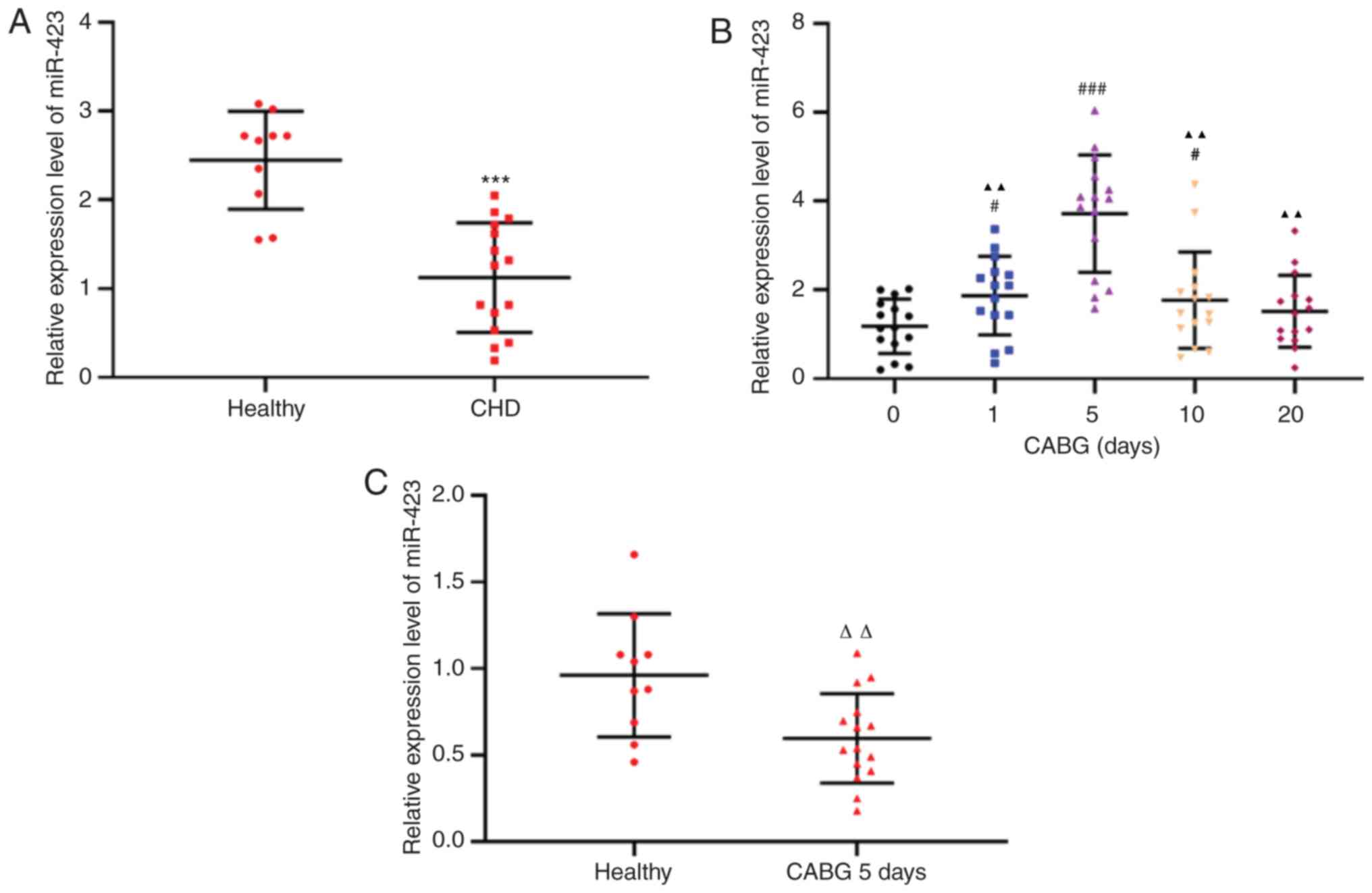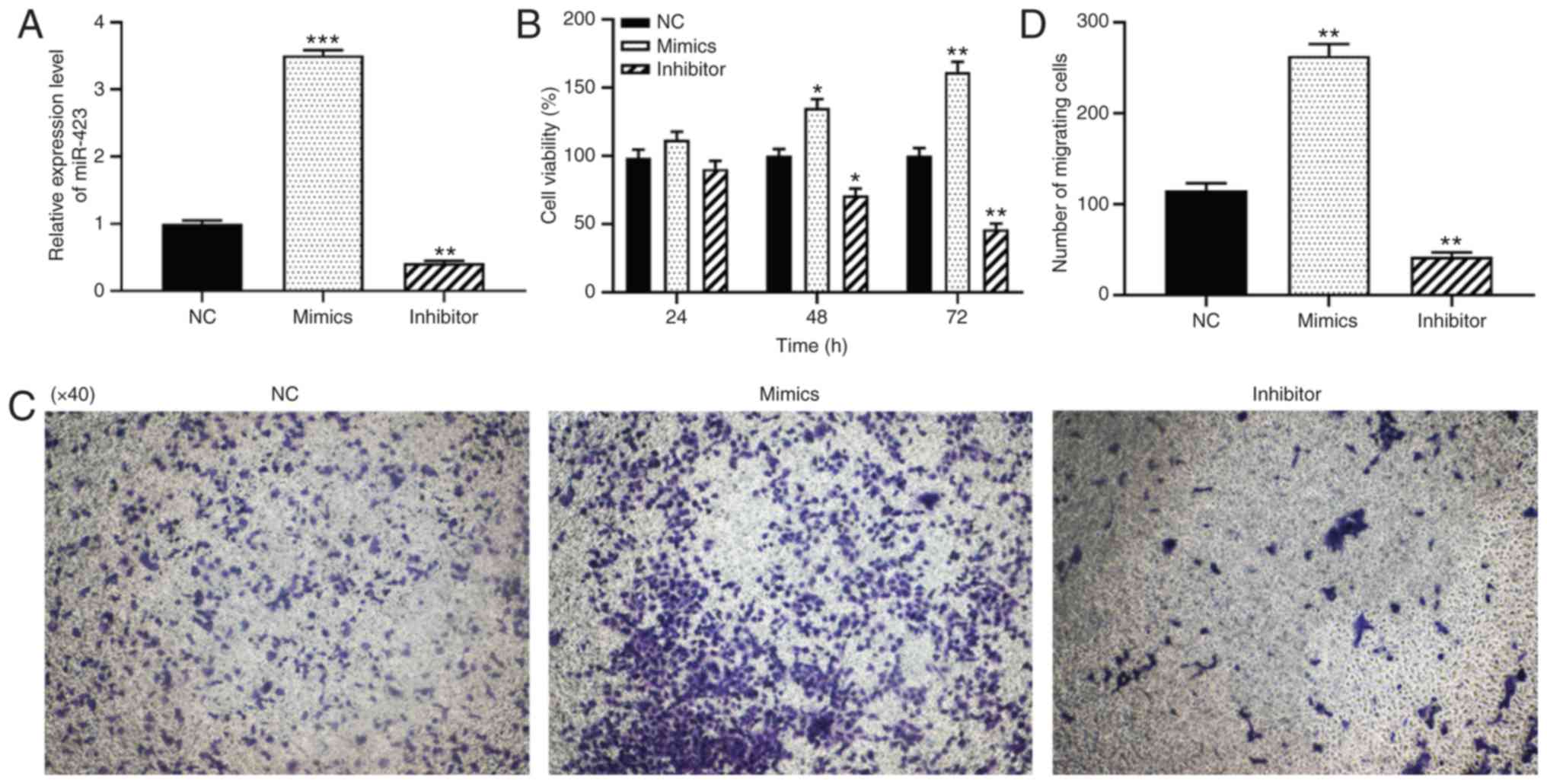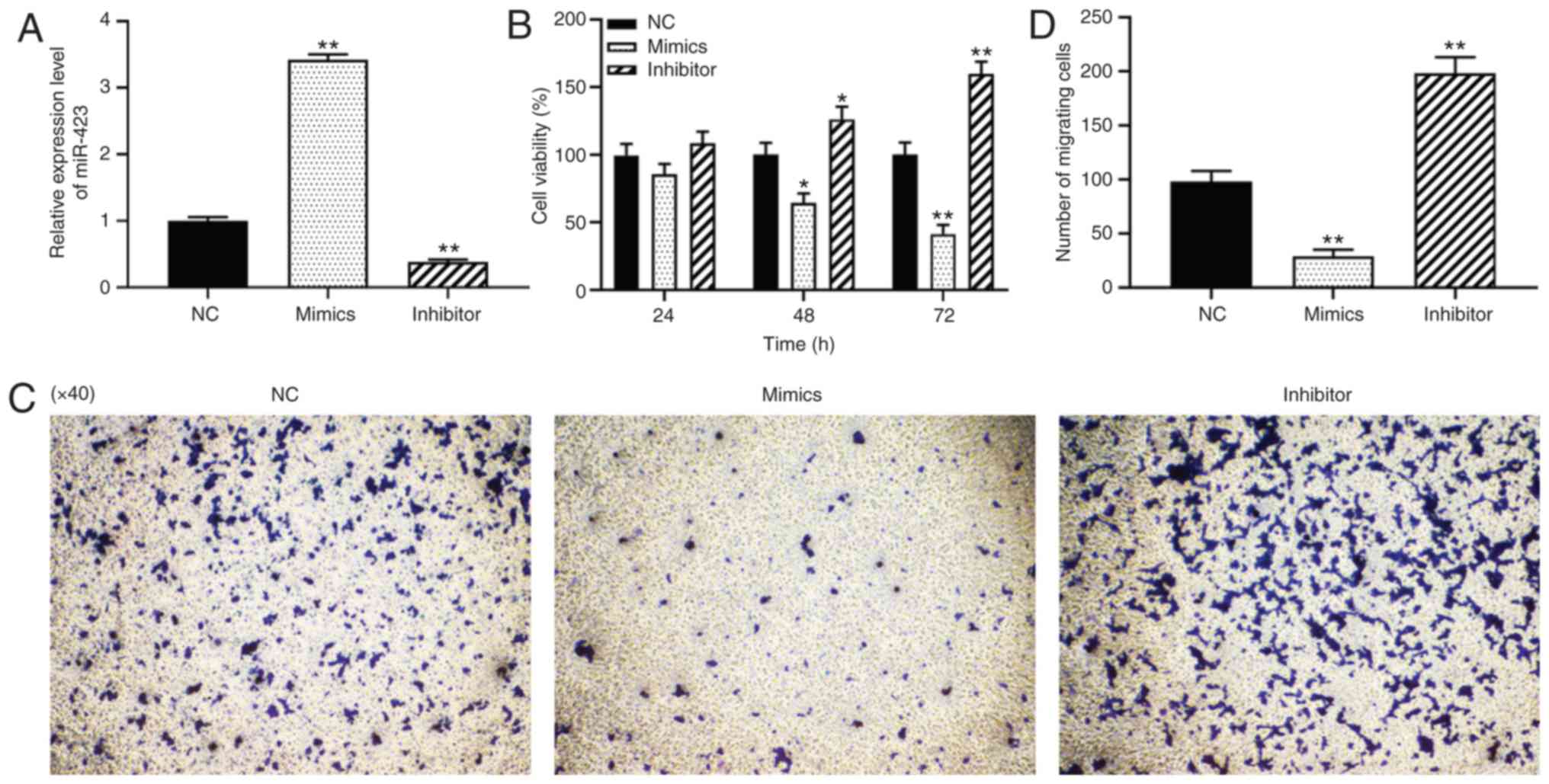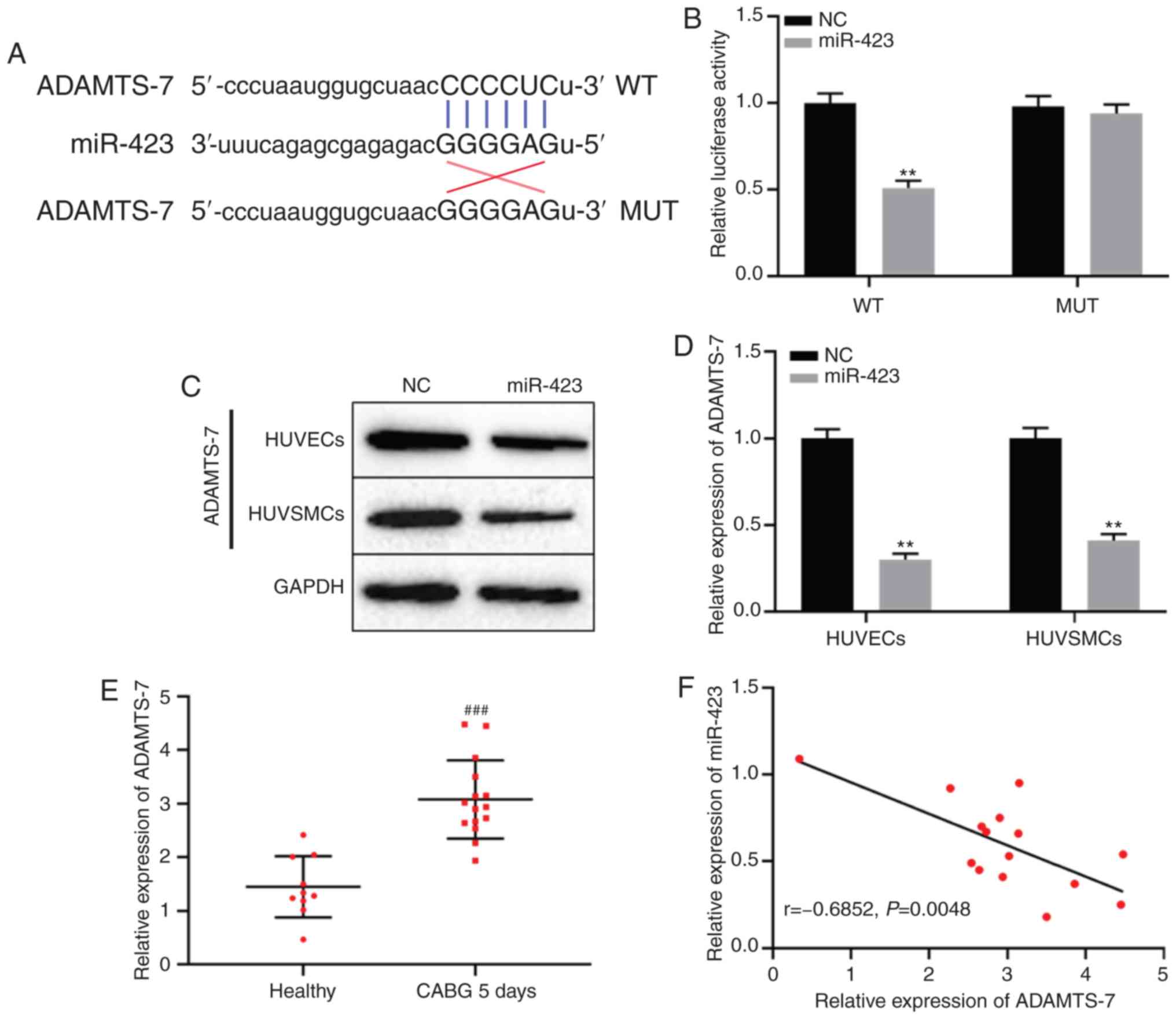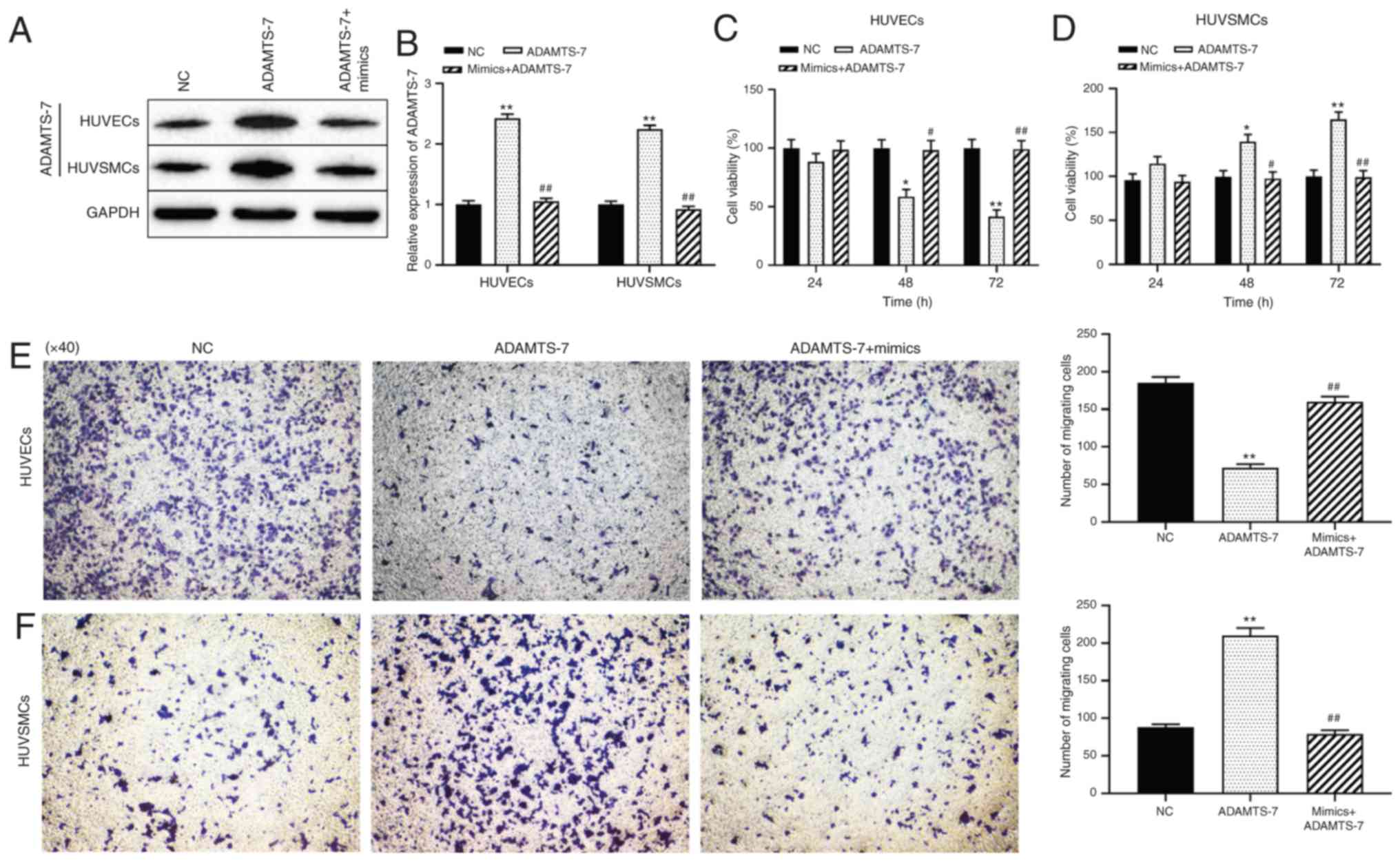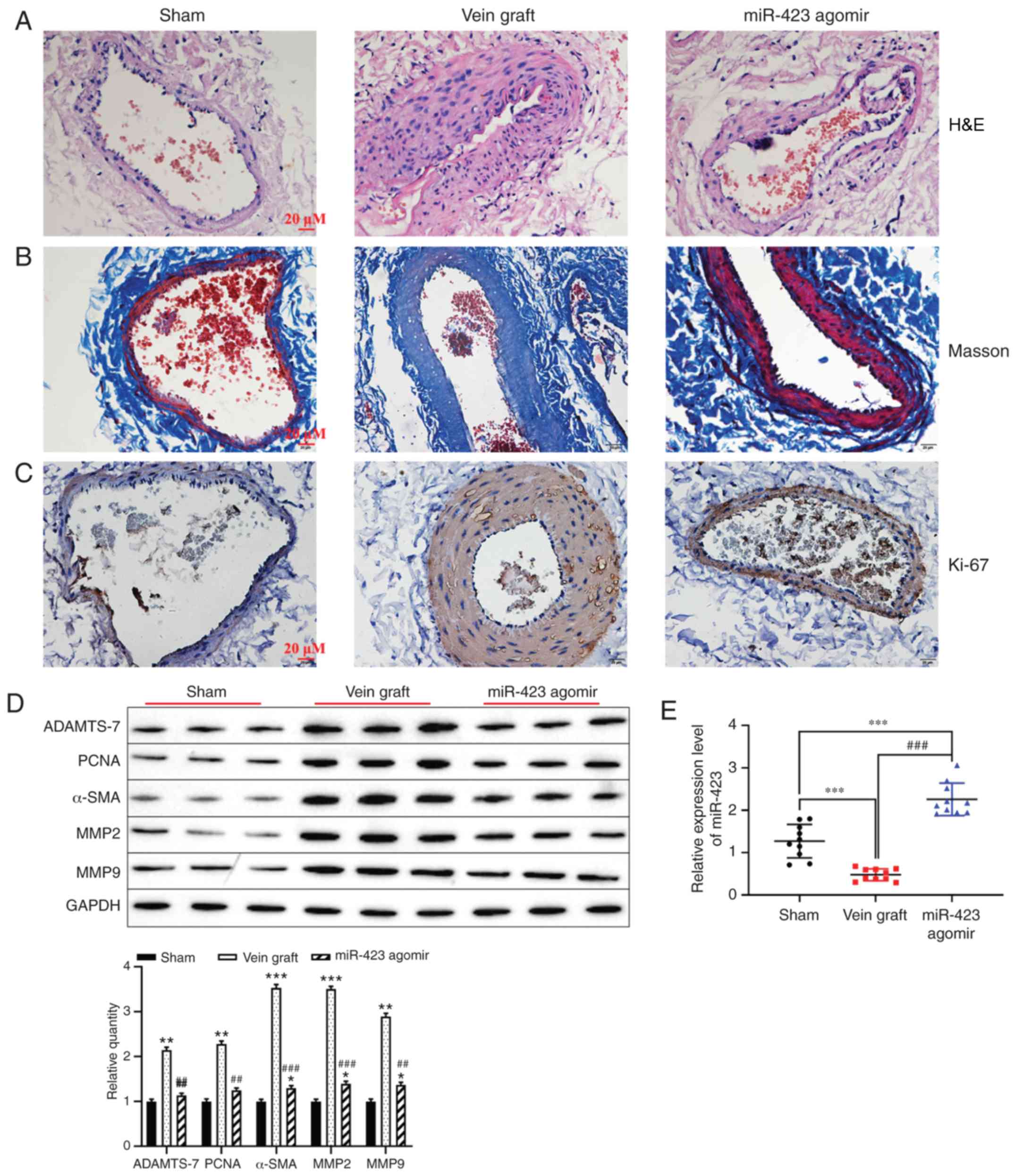|
1
|
Yang X, Li Y, Ren X, Xiong X, Wu L, Li J,
Wang J, Gao Y, Shang H and Xing Y: Effects of exercise-based
cardiac rehabilitation in patients after percutaneous coronary
intervention: A meta-analysis of randomized controlled trials. Sci
Rep. 7:447892017. View Article : Google Scholar : PubMed/NCBI
|
|
2
|
Anderson L, Oldridge N, Thompson DR,
Zwisler AD, Rees K, Martin N and Taylor RS: Exercise-based cardiac
rehabilitation for coronary heart disease: Cochrane systematic
review and meta-analysis. J Am Coll Cardiol. 67:1–12. 2016.
View Article : Google Scholar : PubMed/NCBI
|
|
3
|
Kaur K, Bedi G, Kaur M, Vij A and Kaur I:
Lipid peroxidation and the levels of antioxidant enzymes in
coronary artery disease. Indian J Clin Biochem. 23:33–37. 2008.
View Article : Google Scholar : PubMed/NCBI
|
|
4
|
Yang X, He T, Han S, Zhang X, Sun Y, Xing
Y and Shang H: The role of traditional chinese medicine in the
regulation of oxidative stress in treating coronary heart disease.
Oxid Med Cell Longev. 2019:32314242019. View Article : Google Scholar : PubMed/NCBI
|
|
5
|
Hausenloy DJ, Boston-Griffiths E and
Yellon DM: Cardioprotection during cardiac surgery. Cardiovasc Res.
94:253–265. 2012. View Article : Google Scholar : PubMed/NCBI
|
|
6
|
Hegewald J, Wegewitz UE, Euler U, van Dijk
JL, Adams J, Fishta A, Heinrich P and Seidler A: Interventions to
support return to work for people with coronary heart disease.
Cochrane Database Syst Rev. 3:CD0107482019.PubMed/NCBI
|
|
7
|
McKavanagh P, Yanagawa B, Zawadowski G and
Cheema A: Management and prevention of saphenous vein graft
failure: A review. Cardiol Ther. 6:203–223. 2017. View Article : Google Scholar : PubMed/NCBI
|
|
8
|
Dianati Maleki N, Ehteshami Afshar A and
Parikh PB: Management of saphenous vein graft disease in patients
with prior coronary artery bypass surgery. Curr Treat Options
Cardiovasc Med. 21:122019. View Article : Google Scholar : PubMed/NCBI
|
|
9
|
Virk HUH, Lakhter V, Ahmed M, O'Mucrchu B
and Chatterjee S: Radial artery versus saphenous vein grafts in
coronary artery bypass surgery: A literature review. Curr Cardiol
Rep. 21:362019. View Article : Google Scholar : PubMed/NCBI
|
|
10
|
Kenagy RD, Kikuchi S, Chen L, Wijelath ES,
Stergachis AB, Stamatoyannopoulos J, Tang GL, Clowes AW and Sobel
M: A single nucleotide polymorphism of cyclin-dependent kinase
inhibitor 1B (p27(Kip1)) associated with human vein graft failure
affects growth of human venous adventitial cells but not smooth
muscle cells. J Vasc Surg. 67:309–317. e72018. View Article : Google Scholar
|
|
11
|
Wadey K, Lopes J, Bendeck M and George S:
Role of smooth muscle cells in coronary artery bypass grafting
failure. Cardiovasc Res. 114:601–610. 2018. View Article : Google Scholar : PubMed/NCBI
|
|
12
|
Campos LCG, Ribeiro-Silva JC, Menegon AS,
Barauna VG, Miyakawa AA and Krieger JE: Cyclic stretch-induced Crp3
sensitizes vascular smooth muscle cells to apoptosis during vein
arterialization remodeling. Clin Sci (Lond). Feb 2–2018, Epub ahead
of print. View Article : Google Scholar
|
|
13
|
Gu H, Liu Z and Zhou L: Roles of miR-17-92
cluster in cardiovascular development and common diseases. Biomed
Res Int. 2017:91029092017. View Article : Google Scholar : PubMed/NCBI
|
|
14
|
Moghaddam AS, Afshari JT, Esmaeili SA,
Saburi E, Joneidi Z and Momtazi-Borojeni AA: Cardioprotective
microRNAs: Lessons from stem cell-derived exosomal microRNAs to
treat cardiovascular disease. Atherosclerosis. 285:1–9. 2019.
View Article : Google Scholar : PubMed/NCBI
|
|
15
|
Zhang W, Liu D, Han X, Ren J, Zhou P and
Ding P: MicroRNA-451 inhibits vascular smooth muscle cell migration
and intimal hyperplasia after vascular injury via Ywhaz/p38 MAPK
pathway. Exp Cell Res. 379:214–224. 2019. View Article : Google Scholar : PubMed/NCBI
|
|
16
|
Zheng B, Yin WN, Suzuki T, Zhang XH, Zhang
Y, Song LL, Jin LS, Zhan H, Zhang H, Li JS and Wen JK:
Exosome-mediated miR-155 transfer from smooth muscle cells to
endothelial cells induces endothelial injury and promotes
atherosclerosis. Mol Ther. 25:1279–1294. 2017. View Article : Google Scholar : PubMed/NCBI
|
|
17
|
Gabani M, Liu J, Ait-Aissa K, Koval O, Kim
YR, Castaneda D, Vikram A, Jacobs JS, Grumbach I, Trebak M, et al:
MiR-204 regulates type 1 IP3R to control vascular smooth muscle
cell contractility and blood pressure. Cell Calcium. 80:18–24.
2019. View Article : Google Scholar : PubMed/NCBI
|
|
18
|
Wang Y, Dong CQ, Peng GY, Huang HY, Yu YS,
Ji ZC and Shen ZY: MicroRNA-134-5p regulates media degeneration
through inhibiting VSMC phenotypic switch and migration in thoracic
aortic dissection. Mol Ther Nucleic Acids. 16:284–294. 2019.
View Article : Google Scholar : PubMed/NCBI
|
|
19
|
Cao BJ, Zhu L, Wang XW, Zou RJ and Lu ZQ:
MicroRNA-365 Promotes the contractile phenotype of venous smooth
muscle cells and inhibits neointimal formation in rat vein grafts.
IUBMB Life. 71:908–916. 2019. View
Article : Google Scholar : PubMed/NCBI
|
|
20
|
Elsayed Y, Lekakou C and Tomlins P:
Modeling, simulations, and optimization of smooth muscle cell
tissue engineering for the production of vascular grafts.
Biotechnol Bioeng. 116:1509–1522. 2019. View Article : Google Scholar : PubMed/NCBI
|
|
21
|
Engler A, Dreja F, Koberle S, Thielmann M,
Peters J and Frey UH: Establishment of an easy and straight forward
heparinase protocol to analyse circulating and myocardial tissue
micro-RNA during coronary artery-bypass-graft surgery. Sci Rep.
8:13612018. View Article : Google Scholar : PubMed/NCBI
|
|
22
|
van Boven N, Kardys I, van Vark LC,
Akkerhuis KM, de Ronde MWJ, Khan MAF, Merkus D, Liu Z, Voors AA,
Asselbergs FW, et al: Serially measured circulating microRNAs and
adverse clinical outcomes in patients with acute heart failure. Eur
J Heart Fail. 20:89–96. 2018. View Article : Google Scholar
|
|
23
|
Miyamoto S, Usami S, Kuwabara Y, Horie T,
Baba O, Hakuno D, Nakashima Y, Nishiga M, Izuhara M, Nakao T, et
al: Expression patterns of miRNA-423-5p in the serum and
pericardial fluid in patients undergoing cardiac surgery. PLoS One.
10:e01429042015. View Article : Google Scholar : PubMed/NCBI
|
|
24
|
Tutarel O, Dangwal S, Bretthauer J,
Westhoff-Bleck M, Roentgen P, Anker SD, Bauersachs J and Thum T:
Circulating miR-423-5p fails as a biomarker for systemic
ventricular function in adults after atrial repair for
transposition of the great arteries. Int J Cardiol. 167:63–66.
2013. View Article : Google Scholar
|
|
25
|
Zeng JF, Zeng ZL, Zhang K, Zhao Y, Liu YM,
Chen JJ, Tong H, Wei DH, Jiang ZS and Wang Z: miR-23b-3p and
miR-125b-5p downregulate apo(a) expression by targeting Ets1 in
HepG2 cells. Cell Biol Int. 42:313–323. 2018. View Article : Google Scholar
|
|
26
|
Bauters C, Kumarswamy R, Holzmann A,
Bretthauer J, Anker SD, Pinet F and Thum T: Circulating miR-133a
and miR-423-5p fail as biomarkers for left ventricular remodeling
after myocardial infarction. Int J Cardiol. 168:1837–1840. 2013.
View Article : Google Scholar : PubMed/NCBI
|
|
27
|
Hirota K, Keino H, Inoue M, Ishida H and
Hirakata A: Comparisons of microRNA expression profiles in vitreous
humor between eyes with macular hole and eyes with proliferative
diabetic retinopathy. Graefes Arch Clin Exp Ophthalmol.
253:335–342. 2015. View Article : Google Scholar
|
|
28
|
Ayoubian H, Ludwig N, Fehlmann T,
Menegatti J, Groger L, Anastasiadou E, Trivedi P, Keller A, Meese E
and Grasser FA: Epsteinbarr virus infection of cell lines derived
from diffuse large B-cell lymphomas alters microrna loading of the
Ago2 complex. J Virol. 93:e1297–e1318. 2019.
|
|
29
|
Zhang L, Yu F, Wang L, Zheng J, Du Y,
Huang Y, Liu B, Wang X and Kong W: ADAMTS-7 promotes vascular
smooth muscle cells proliferation in vitro and in vivo. Sci China
Life Sci. 58:674–681. 2015. View Article : Google Scholar : PubMed/NCBI
|
|
30
|
Bengtsson E, Hultman K, Duner P, Asciutto
G, Almgren P, Orho-Melander M, Melander O, Nilsson J,
Hultgardh-Nilsson A and Goncalves I: ADAMTS-7 is associated with a
high-risk plaque phenotype in human atherosclerosis. Sci Rep.
7:37532017. View Article : Google Scholar : PubMed/NCBI
|
|
31
|
Wang L, Zheng J, Bai X, Liu B, Liu CJ, Xu
Q, Zhu Y, Wang N, Kong W and Wang X: ADAMTS-7 mediates vascular
smooth muscle cell migration and neointima formation in
balloon-injured rat arteries. Circ Res. 104:688–698. 2009.
View Article : Google Scholar : PubMed/NCBI
|
|
32
|
Kessler T, Zhang L, Liu Z, Yin X, Huang Y,
Wang Y, Fu Y, Mayr M, Ge Q, Xu Q, et al: ADAMTS-7 inhibits
re-endothelialization of injured arteries and promotes vascular
remodeling through cleavage of thrombospondin-1. Circulation.
131:1191–1201. 2015. View Article : Google Scholar : PubMed/NCBI
|
|
33
|
Livak KJ and Schmittgen TD: Analysis of
relative gene expression data using real-time quantitative PCR and
the 2(-Delta Delta C(T)) method. Methods. 25:402–408. 2001.
View Article : Google Scholar
|
|
34
|
Agarwal V, Bell GW, Nam J and Bartel DP:
Predicting effective microRNA target sites in mammalian mRNAs.
Elife. 4:e050052015. View Article : Google Scholar :
|
|
35
|
García DM, Baek D, Shin C, Bell GW,
Grimson A and Bartel DP: Weak seed-pairing stability and high
target-site abundance decrease the proficiency of lsy-6 and other
miRNAs. Nat Struct Mol Biol. 18:1139–1146. 2011. View Article : Google Scholar : PubMed/NCBI
|
|
36
|
Friedman RC, Farh KK, Burge CB and Bartel
DP: Most mammalian mRNAs are conserved targets of MicroRNAs. Genome
Res. 19:92–105. 2009. View Article : Google Scholar :
|
|
37
|
Grimson A, Farh KK, Johnston WK,
Garrett-Engele P, Lim LP and Bartel DP: MicroRNA targeting
specificity in mammals: Determinants beyond seed pairing. Mol Cell.
27:91–105. 2007. View Article : Google Scholar : PubMed/NCBI
|
|
38
|
Shah T, Palaskas N and Ahmed A: An update
on gender disparities in coronary heart disease care. Curr
Atheroscler Rep. 18:282016. View Article : Google Scholar : PubMed/NCBI
|
|
39
|
Nouraee N and Mowla SJ: miRNA therapeutics
in cardiovascular diseases: Promises and problems. Front Genet.
6:2322015. View Article : Google Scholar : PubMed/NCBI
|
|
40
|
van Rooij E and Olson EN: MicroRNA
therapeutics for cardiovascular disease: Opportunities and
obstacles. Nat Rev Drug Discov. 11:860–872. 2012. View Article : Google Scholar : PubMed/NCBI
|
|
41
|
Kostina D, Zverev D, Grebennik V, Gordeev
M, Ignatieva E, Voronkina I, Kostareva A and Malashicheva A: aortic
graft at coronary artery bypass surgery as a source of human aortic
smooth muscle cells. Cell Transplant. 26:1663–1668. 2017.
View Article : Google Scholar : PubMed/NCBI
|
|
42
|
Zhu Y, Feng B, He S, Su Z and Zheng G:
Resveratrol combined with total flavones of hawthorn alleviate the
endothelial cells injury after coronary bypass graft surgery.
Phytomedicine. 40:20–26. 2018. View Article : Google Scholar : PubMed/NCBI
|
|
43
|
Hu X, Wang Z, Wu H, Jiang W and Hu R: Ras
ssDNA aptamer inhibits vascular smooth muscle cell proliferation
and migration through MAPK and PI3K pathways. Int J Mol Med.
35:1355–1361. 2015.PubMed/NCBI
|
|
44
|
Wang D, Wang Y, Ma J, Wang W, Sun B, Zheng
T, Wei M and Sun Y: MicroRNA-20a participates in the aerobic
exercise-based prevention of coronary artery disease by targeting
PTEN. Biomed Pharmacother. 95:756–763. 2017. View Article : Google Scholar : PubMed/NCBI
|
|
45
|
Frey UH, Klaassen M, Ochsenfarth C, Murke
F, Thielmann M, Kottenberg E, Kleinbongard P, Klenke S, Engler A,
Heusch G, et al: Remote ischaemic preconditioning increases serum
extracellular vesicle concentrations with altered micro-RNA
signature in CABG patients. Acta Anaesthesiol Scand. 63:483–492.
2019.
|
|
46
|
Wang Z, Li X, Shen J, Tian D, Ji Q, Xia L
and Lv Q: Plasma microRNAs reflecting cardiac and inflammatory
injury in coronary artery bypass grafting surgery. J Surg Res.
224:58–63. 2018. View Article : Google Scholar : PubMed/NCBI
|
|
47
|
Ram TP, Fomison-Nurse I, Gandhi S, Coffey
S, Saxena P, Galvin I, Bunton R, Williams MJA, Lamberts RR and
Katare R: The diagnostic sensitivity of circulating cardio-enriched
microRNAs is increased after normalization of high-density
lipoprotein levels. Int J Cardiol. 236:498–500. 2017. View Article : Google Scholar : PubMed/NCBI
|
|
48
|
Santulli G: microRNAs Distinctively
regulate vascular smooth muscle and endothelial cells: Functional
implications in angiogenesis, atherosclerosis, and in-stent
restenosis. Adv Exp Med Biol. 887:53–77. 2015. View Article : Google Scholar : PubMed/NCBI
|
|
49
|
Yeh YT, Wei J, Thorossian S, Nguyen K,
Hoffman C, Del Alamo JC, Serrano R, Li YJ, Wang KC and Chien S:
MiR-145 mediates cell morphology-regulated mesenchymal stem cell
differentiation to smooth muscle cells. Biomaterials. 204:59–69.
2019. View Article : Google Scholar : PubMed/NCBI
|
|
50
|
Hall IF, Climent M, Quintavalle M, Farina
FM, Schorn T, Zani S, Carullo P, Kunderfranco P, Civilini E,
Condorelli G and Elia L: Circ_Lrp6, a circular RNA enriched in
vascular smooth muscle cells, acts as a sponge regulating miRNA-145
function. Circ Res. 124:498–510. 2019. View Article : Google Scholar
|
|
51
|
Yasmeen S, Kaur S, Mirza AH, Brodin B,
Pociot F and Kruuse C: miRNA-27a-3p and miRNA-222-3p as novel
modulators of phosphodiesterase 3a (PDE3A) in cerebral
microvascular endothelial cells. Mol Neurobiol. 56:5304–5314. 2019.
View Article : Google Scholar : PubMed/NCBI
|
|
52
|
Gu J, Zhang H, Ji B, Jiang H, Zhao T,
Jiang R, Zhang Z, Tan S, Ahmed A and Gu Y: Vesicle miR-195 derived
from endothelial cells inhibits expression of serotonin transporter
in vessel smooth muscle cells. Sci Rep. 7:435462017. View Article : Google Scholar : PubMed/NCBI
|
|
53
|
Fang Q, Tian M, Wang F, Zhang Z, Du T,
Wang W, Yang Y, Li X, Chen G, Xiao L, et al: Amlodipine induces
vasodilation via Akt2/Sp1-activated miR-21 in smooth muscle cells.
Br J Pharmacol. 176:2306–2320. 2019.PubMed/NCBI
|
|
54
|
Liu S, Yang Y, Jiang S, Xu H, Tang N, Lobo
A, Zhang R, Liu S, Yu T and Xin H: MiR-378a-5p regulates
proliferation and migration in vascular smooth muscle cell by
targeting CDK1. Front Genet. 10:222019. View Article : Google Scholar : PubMed/NCBI
|
|
55
|
Huang SC, Wang M, Wu WB, Wang R, Cui J, Li
W, Li ZL, Li W and Wang SM: Mir-22-3p inhibits arterial smooth
muscle cell proliferation and migration and neointimal hyperplasia
by targeting HMGB1 in arteriosclerosis obliterans. Cell Physiol
Biochem. 42:2492–2506. 2017. View Article : Google Scholar : PubMed/NCBI
|
|
56
|
Qu Q, Bing W, Meng X, Xi J, Bai X, Liu Q,
Guo Y, Zhao X and Bi Y: Upregulation of miR-126-3p promotes human
saphenous vein endothelial cell proliferation in vitro and prevents
vein graft neointimal formation ex vivo and in vivo. Oncotarget.
8:106790–106806. 2017. View Article : Google Scholar :
|
|
57
|
Fichtlscherer S, De Rosa S, Fox H,
Schwietz T, Fischer A, Liebetrau C, Weber M, Hamm CW, Röxe T,
Müller-Ardogan M, et al: Circulating microRNAs in patients with
coronary artery disease. Circ Res. 107:677–684. 2010. View Article : Google Scholar : PubMed/NCBI
|
|
58
|
Pu X, Xiao Q, Kiechl S, Chan K, Ng FL, Gor
S, Poston RN, Fang C, Patel A, Senver EC, et al: ADAMTS7 cleavage
and vascular smooth muscle cell migration is affected by a
coronary-artery-disease-associated variant. Am J Hum Genet.
92:366–374. 2013. View Article : Google Scholar : PubMed/NCBI
|
|
59
|
Wu W, Wang H, Yu C, Li J, Gao Y, Ke Y,
Wang Y, Zhou Y and Zheng J: Association of ADAMTS-7 levels with
cardiac function in a rat model of acute myocardial infarction.
Cell Physiol Biochem. 38:950–958. 2016. View Article : Google Scholar : PubMed/NCBI
|
|
60
|
Yu J, Zhou B, Yu H, Han J, Cui M, Zhang F,
Wang G, Guo L and Gao W: Association between plasma ADAMTS-7 levels
and severity of disease in patients with stable obstructive
coronary artery disease. Medicine (Baltimore). 95:e55232016.
View Article : Google Scholar
|
|
61
|
Jansen F, Stumpf T, Proebsting S, Franklin
BS, Wenzel D, Pfeifer P, Flender A, Schmitz T, Yang X, Fleischmann
BK, et al: Intercellular transfer of miR-126-3p by endothelial
microparticles reduces vascular smooth muscle cell proliferation
and limits neointima formation by inhibiting LRP6. J Mol Cell
Cardiol. 104:43–52. 2017. View Article : Google Scholar : PubMed/NCBI
|
|
62
|
Wu W, Zhou Y, Li Y, Li J, Ke Y, Wang Y and
Zheng J: Association between plasma ADAMTS-7 levels and ventricular
remodeling in patients with acute myocardial infarction. Eur J Med
Res. 20:272015. View Article : Google Scholar : PubMed/NCBI
|
|
63
|
Du Y, Gao C, Liu Z, Wang L, Liu B, He F,
Zhang T, Wang Y, Wang X, Xu M, et al: Upregulation of a disintegrin
and metallo-proteinase with thrombospondin motifs-7 by miR-29
repression mediates vascular smooth muscle calcification.
Arterioscler Thromb Vasc Biol. 32:2580–2588. 2012. View Article : Google Scholar : PubMed/NCBI
|
|
64
|
Bendeck MP, Conte M, Zhang M, Nili N,
Strauss BH and Farwell SM: Doxycycline modulates smooth muscle cell
growth, migration, and matrix remodeling after arterial injury. Am
J Pathol. 160:1089–1095. 2002. View Article : Google Scholar : PubMed/NCBI
|
|
65
|
Wang L, Zheng J, Du Y, Huang Y, Li J, Liu
B, Liu CJ, Zhu Y, Gao Y, Xu Q, et al: Cartilage oligomeric matrix
protein maintains the contractile phenotype of vascular smooth
muscle cells by interacting with alpha(7)beta(1) integrin. Circ
Res. 106:514–525. 2010. View Article : Google Scholar
|















